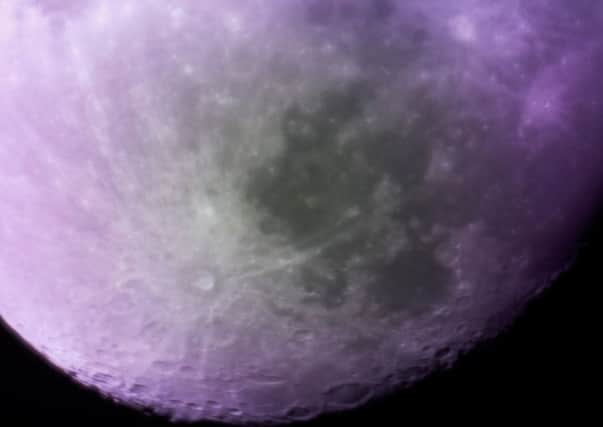A close-up look at space using a telescope made on a 3D printer


The images may be simple but they are being hailed as a major breakthrough. The telescope in question costs just £100 to make and is constructed from parts readily available on the internet.
The entrepreneurs responsible, Institute of Physics member Mark Wrigley and University of Sheffield Physics and Astronomy research associate Andy Kirby, have even made the plans available online so that any budding astrologers can build their own telescope, saving a minimum of £800 compared to models of the same capabilities.
Advertisement
Hide AdAdvertisement
Hide AdThe ground-breaking product, which is based on Isaac Newton’s reflecting telescope design, is called PiKon; a portmanteau made from combining the alternative spelling of ‘icon’, which is Greek for ‘image’, and the name of the readily available Raspberry Pi camera, which sits in the telescope.
The product works by using a Newtonian concave mirror to form an image of whatever the telescope is focussed on directly onto the Pi camera sensor, which is mounted onto components created by 3D printing. Because of the small size of the Raspberry Pi camera, it is possible to mount it directly in front of the mirror.
The PiKon telescope has a magnification of times 160, which means that on a cloudless night it will be capable of detailed lunar observation as well as galaxies, star clusters and some planetary observation.
Subsequent processing of the PiKon’s digital images also makes it possible to use the telescope to ‘stack’ and compare images, therefore scanning the night skies for unusual occurrences, such as comets.
Advertisement
Hide AdAdvertisement
Hide AdThe physicists have unveiled the ambitious project, called Disruptive Technology Astronomy, as part of the University of Sheffield’s Festival of the Mind which runs until September 28, which has been designed to make academic research accessible to the public, teaming leading academics with famous artists and creatives.
Of the PiKon telescope, former physicist and member of the Institute of Physics, Mark Wrigley, said: “We’ve called this project Disruptive Technology Astronomy because we hope it will be a game changer, just like all Disruptive Technologies, We hope that one day this will be seen on a par with the famous Dobsonian ‘pavement’ telescopes, which allowed hobbyists to see into the night skies for the first time.
“This is all about democratising technology, making it cheap and readily available to the general public. And the PiKon is just the start. It is our aim to not only use the public’s feedback and participation to improve it, but also to launch new products which will be of value to people.”
The Festival of the Mind, which was also held two years ago in 2012, is the brainchild of Professor Vanessa Toulmin, Head of Engagement at the University of Sheffield and Director of the National Fairground Archive.
Advertisement
Hide AdAdvertisement
Hide AdContinuing the theme of space, the Festival also featured a live musical performance by 150 musicians of Gustav Holst’s symphonic suite The Planets in a pop-up planetarium.
The performance, conceived by acclaimed University of Sheffield Concerts Producer, Stewart Campbell, took place in the University’s eight sided Octagon Centre, where images provided by NASA were projected onto the walls, creating a unique experience. In total, the schedule includes over 150 city-wide events.
Visit thingiverse.com for full details of how to build your own telescope.